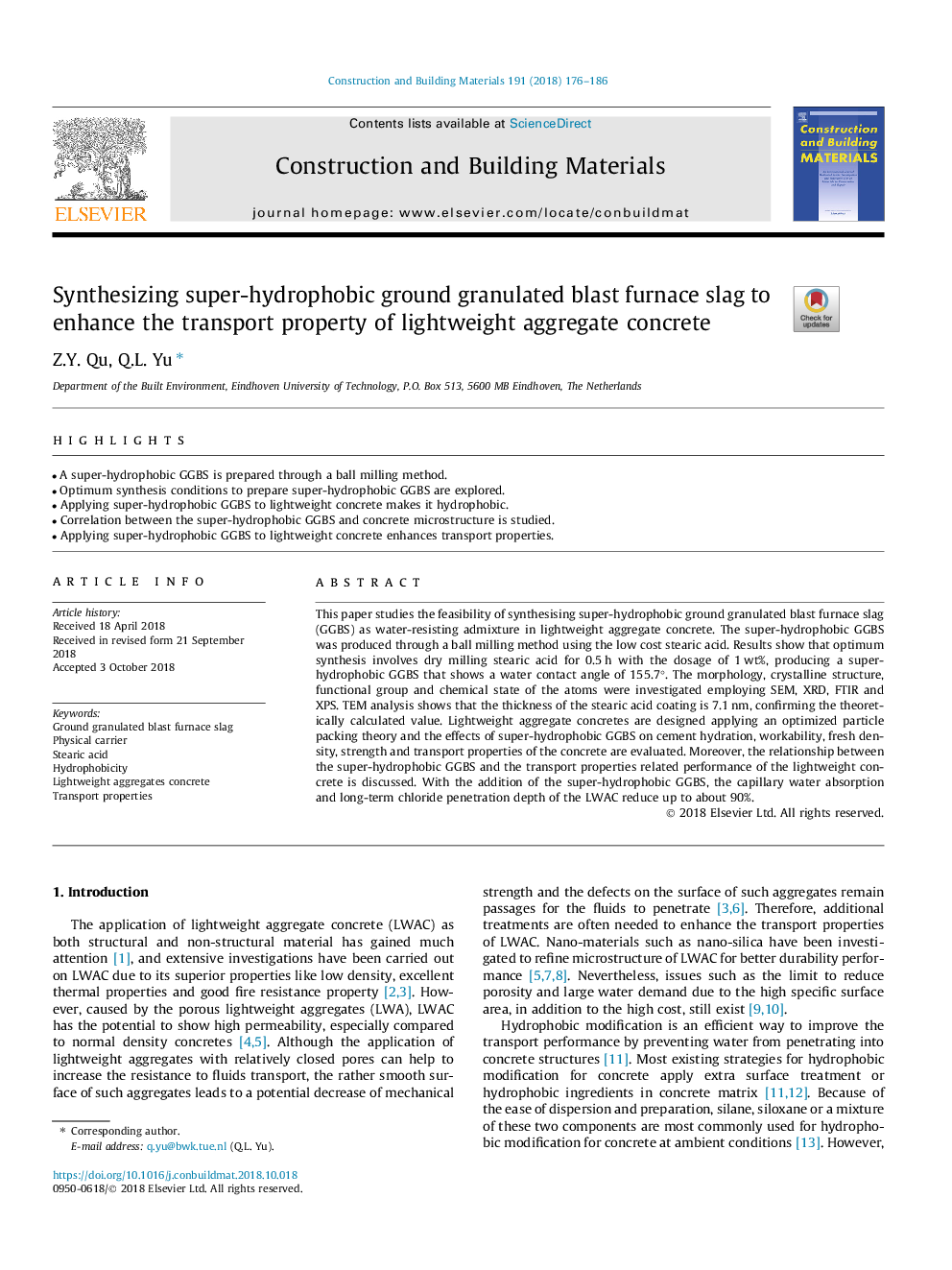| Article ID | Journal | Published Year | Pages | File Type |
|---|---|---|---|---|
| 11012619 | Construction and Building Materials | 2018 | 11 Pages |
Abstract
This paper studies the feasibility of synthesising super-hydrophobic ground granulated blast furnace slag (GGBS) as water-resisting admixture in lightweight aggregate concrete. The super-hydrophobic GGBS was produced through a ball milling method using the low cost stearic acid. Results show that optimum synthesis involves dry milling stearic acid for 0.5â¯h with the dosage of 1â¯wt%, producing a super-hydrophobic GGBS that shows a water contact angle of 155.7°. The morphology, crystalline structure, functional group and chemical state of the atoms were investigated employing SEM, XRD, FTIR and XPS. TEM analysis shows that the thickness of the stearic acid coating is 7.1â¯nm, confirming the theoretically calculated value. Lightweight aggregate concretes are designed applying an optimized particle packing theory and the effects of super-hydrophobic GGBS on cement hydration, workability, fresh density, strength and transport properties of the concrete are evaluated. Moreover, the relationship between the super-hydrophobic GGBS and the transport properties related performance of the lightweight concrete is discussed. With the addition of the super-hydrophobic GGBS, the capillary water absorption and long-term chloride penetration depth of the LWAC reduce up to about 90%.
Related Topics
Physical Sciences and Engineering
Engineering
Civil and Structural Engineering
Authors
Z.Y. Qu, Q.L. Yu,
